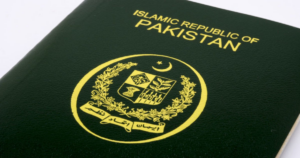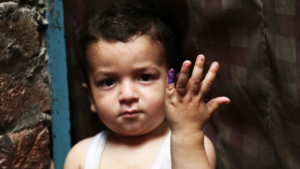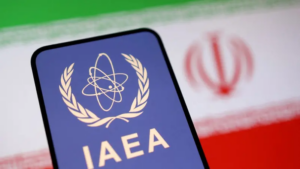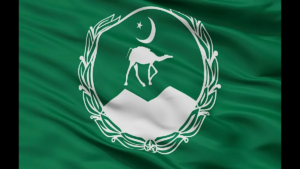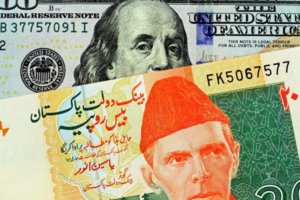
In the sprawling Pakistani metropolis of Karachi, where the hum of commerce and the rhythm of resilience are as constant as the tides that kiss its southern coast, a darker beat continues to define daily life—one of fear, loss, and uncertainty.
As 2025 unfolds, street crime remains an unresolved and escalating crisis in Pakistan’s largest city, casting a long shadow over efforts to restore public confidence and establish meaningful law and order.
A decade of despair
For more than a decade, Karachi has battled the scourge of street crimes, but the situation has reached new depths in 2025.
Mobile phone snatchings, motorbike thefts, muggings at gunpoint, and even daylight killings have become alarmingly routine.
According to recent data released by the Citizens-Police Liaison Committee (CPLC), over 35,000 incidents of mobile snatching were reported in the first quarter of the year alone.
This is not just a number—it is a daily indictment of the state’s inability to protect its citizens.
Behind every statistic is a face, a family, and a trauma. A young woman robbed while returning from university, a father gunned down for resisting the theft of his bike, a schoolchild witnessing their parent held at gunpoint—these are the grim stories that define Karachi’s streets today.
A failure of policing—or something deeper?
Criticism of Karachi’s police force is widespread and, to many, justified.
Despite numerous reshuffles of top brass and promises of reform, the street crime rate has only worsened.
The deployment of “snap-checking” points and sporadic police patrolling has done little to deter criminals who appear emboldened by a system too slow, too corrupt, or too compromised to react meaningfully.
But to blame the police alone is to miss the forest for the trees. Karachi’s crime crisis is not just a law enforcement issue—it is deeply rooted in structural, economic, and administrative dysfunction.
The city, home to over 20 million residents, operates under a fragmented governance model where authority is often diffused among provincial, federal, and military stakeholders.
This dilution of power has made coherent, citywide crime prevention policies almost impossible to implement.
Economic underbelly
Karachi’s street crime problem cannot be divorced from the larger economic landscape.
Pakistan’s inflation has soared into double digits, unemployment remains high, and the rupee has suffered repeated blows.
In this environment, petty crime is increasingly being seen not just as a byproduct of criminal syndicates, but as a desperate act for many struggling to survive.
Young men in low-income neighborhoods, facing limited opportunities and increasing frustration, are often lured into crime rings that offer them a means of income, however illicit.
Add to this the lack of vocational training, poor education infrastructure, and limited mental health support, and you begin to see the recipe for a social catastrophe.
Tech, tools, and missed opportunities
Ironically, as the tech ecosystem in Pakistan shows promise—with startups emerging in fintech, logistics, and e-commerce—Karachi’s security apparatus has failed to keep up.
While criminals use GPS, burner phones, and social media platforms to coordinate their activities, police forces are still grappling with outdated software, paper-based FIR systems, and limited digital surveillance capacity.
The Safe City Project, once touted as a game-changer for Karachi’s security, remains mired in delays and bureaucratic deadlock.
Surveillance cameras, if installed, are either non-functional or not linked to any central intelligence system. This failure to embrace tech as a force multiplier in crime prevention is costing the city dearly.
Civil society and spirit of resistance
Amid the gloom, however, Karachi’s civil society continues to show remarkable resilience.
Neighbourhood watch groups, citizen reporting apps, and youth-led initiatives are doing what they can to create awareness and pressure the authorities into action.
Some local communities have taken to organising self-defense classes, first aid training, and public safety forums to build collective resilience.
In a city so often portrayed as broken, this spirit of community stands as both a beacon of hope and a critique of the state’s failure.
A city held hostage
The persistence of street crimes also reflects the erosion of public space and freedom in Karachi.
Citizens avoid late-night outings, change daily routines, and often leave their homes in fear.
Women, in particular, face double vulnerability—threatened by both gender-based violence and the general insecurity of the streets.
Public parks, shopping districts, and even school zones are not immune to the reach of criminals.
In effect, Karachi is becoming a city held hostage—not by ideology, war, or natural disaster, but by the unchecked and metastasizing presence of everyday lawlessness.
The political will that isn’t
Addressing Karachi’s street crime crisis demands more than empty promises and short-term crackdowns.
It requires sustained political will, backed by resources, planning, and a long-term vision for urban safety and inclusive growth.
Unfortunately, political stakeholders—often distracted by infighting, blame games, and power struggles—have repeatedly failed to place Karachi’s security at the top of their agenda.
Whether it’s the Sindh government, federal leadership, or city administrators, the response to Karachi’s crime wave has lacked both urgency and coherence.
Time is running out
Karachi, often called the “city of lights,” now flickers in uncertainty. Its people, known for their resilience, are growing tired of merely surviving.
The new year, instead of being a year of progress and rebuilding, has so far been one of continued dread for many Karachites.
Street crimes are more than a public safety concern—they are a litmus test for the state’s capacity to govern, protect, and uphold the dignity of life. If the cycle continues unbroken, Karachi may well become the cautionary tale of urban decay in South Asia.

